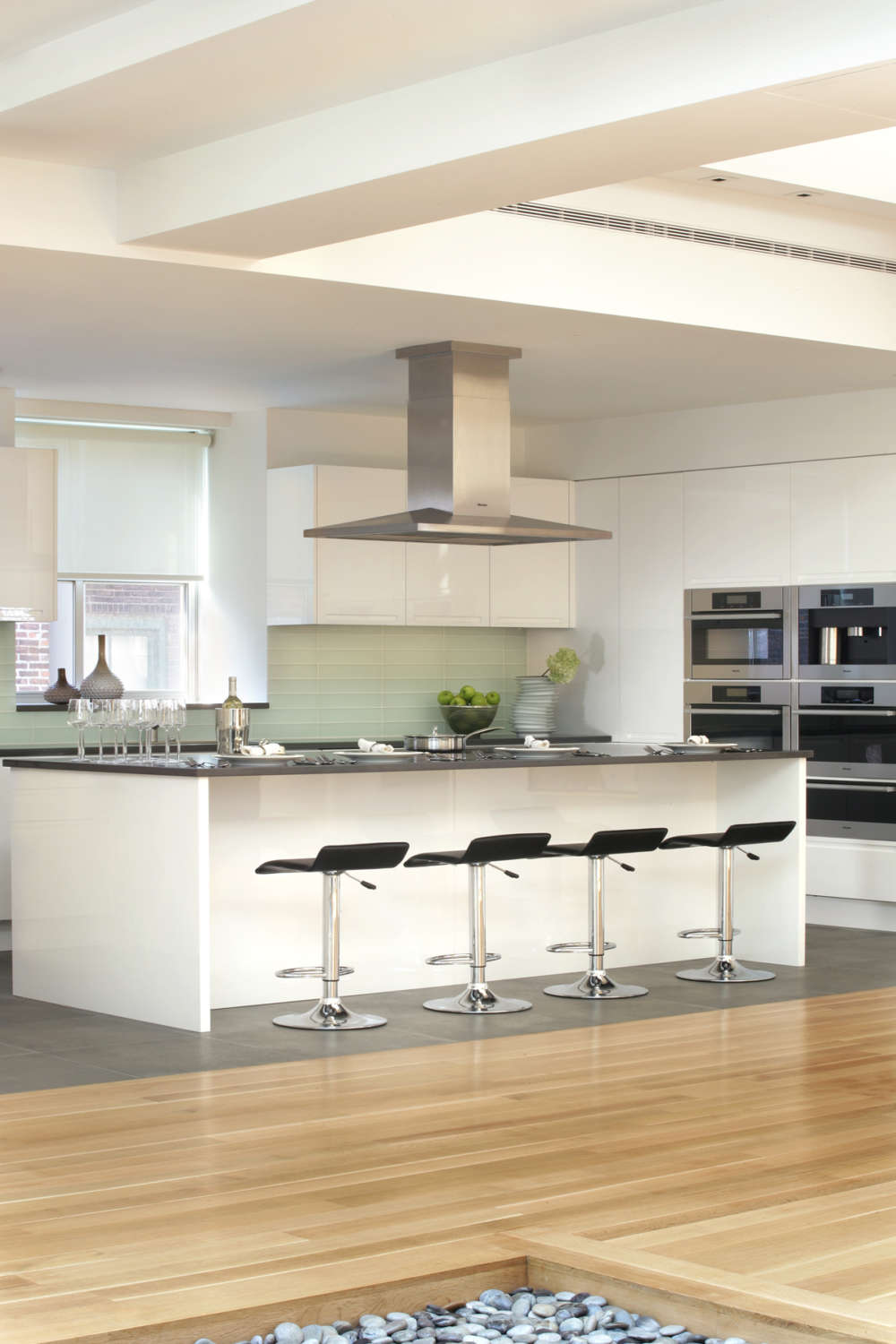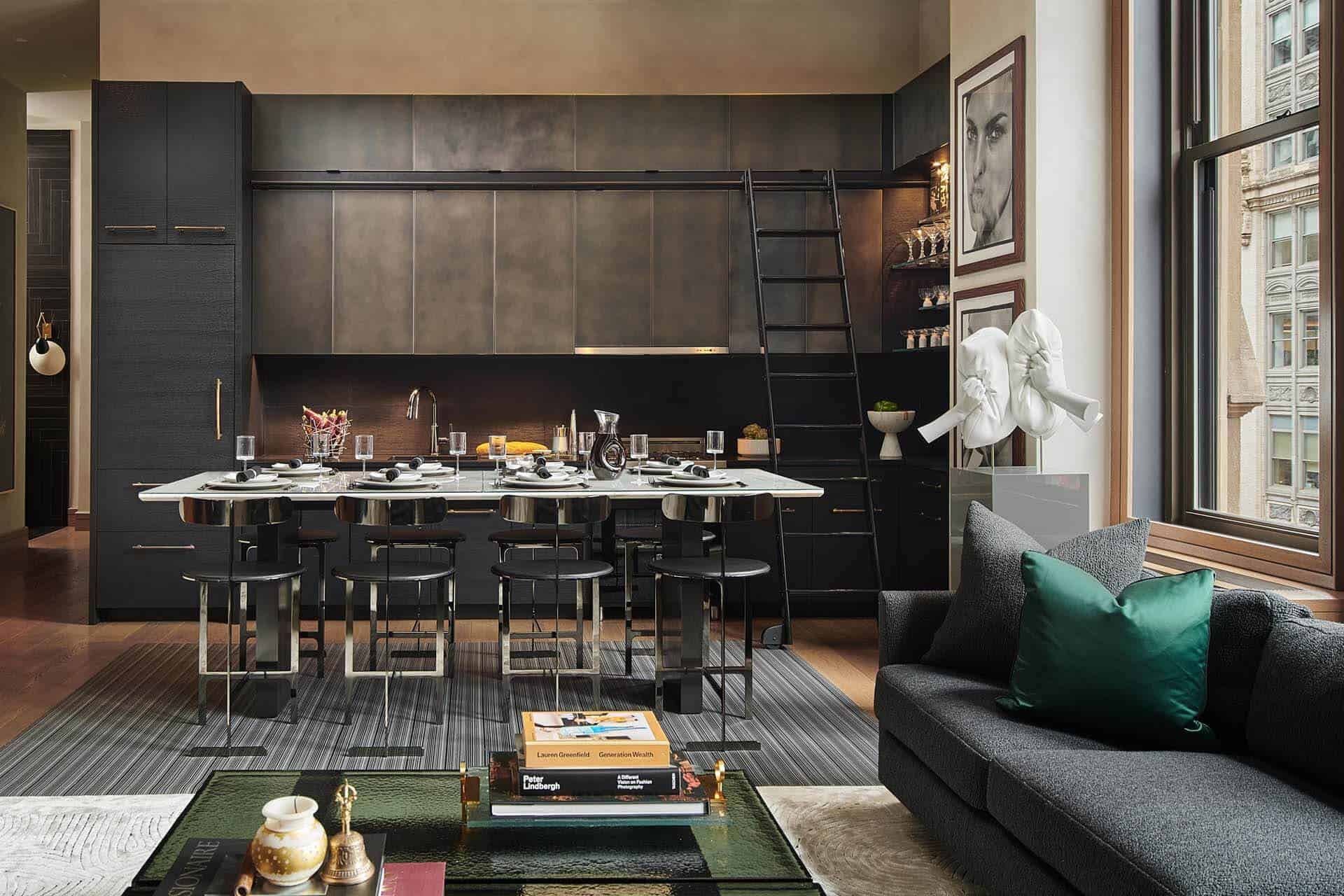The Keys to Designing Sustainably
Are you looking to renovate your kitchen and save the earth at the same time? Believe it or not you can achieve both.
In today’s world everyone knows the basics of doing their part to protect Mother Earth. Don’t buy bottled water, compost, re-use plastic freezer bags and tin foil, bring re-usable bags to the grocery store, separate cardboard from plastic, walk or carpool instead of driving alone, and so on. But there is so much more you can do, even when remodeling your kitchen.
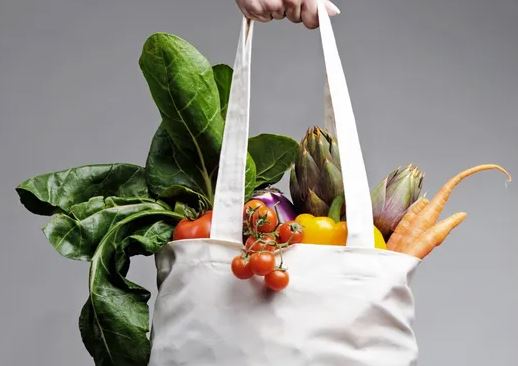
Here’s an alarming statistic: according to some recent studies, each year, 100,000+ luxury kitchens are thrown away – each kitchen adds an average of 7,000 lbs. of debris to our landfills. That’s a total of 125,000 tons of waste per year. In the US, over 10.2 million kitchens are installed each year, thus beginning the cycle. Cabinetry, countertops, appliances, etc., can take hundreds of years to decompose if they do at all.
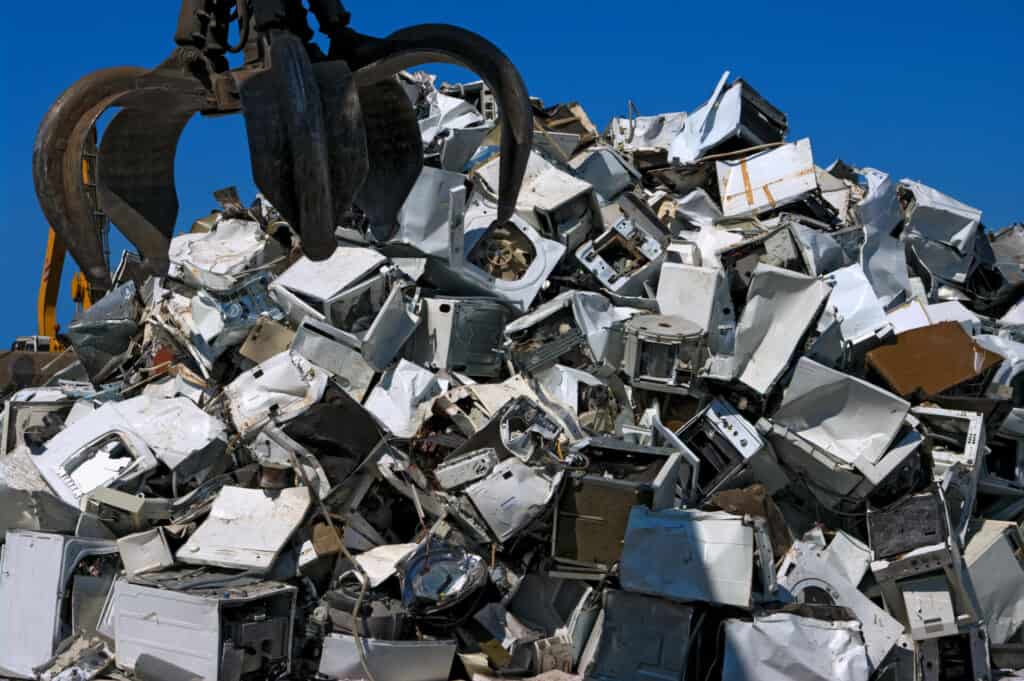
Now you’re about to embark on a kitchen renovation. There are endless possibilities – so where to start? Well, if saving the earth is as important to you as cooking, good storage, and entertaining your family and friends, then you’ve come to the right blog. Read on to learn a few ways in which you can achieve it all.
The 3 keys to sustainable kitchen design
To start, think of the “Three Keys to Sustainable Design”:
- Use materials that will be long lasting;
- Design for inheritability – do it once in a generation;
- Use genuine materials vs. fake.
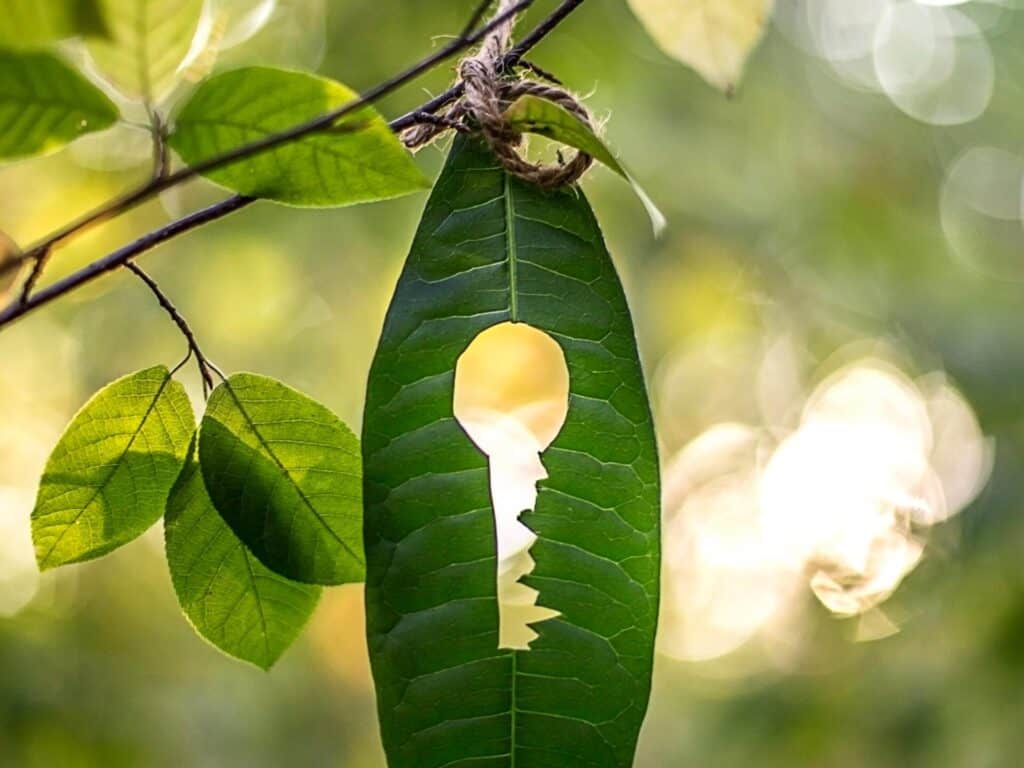
How to Build a More Sustainable Kitchen
These “keys” seem obvious. Of course it all falls on what materials you use and how long they will last. But there is more to it. The following are just some of the ways to achieve an eco-friendly design.
1. Recycle or Repurpose Your Existing Kitchen:
Before you even step foot in a kitchen design showroom, you can start the “green” process by contacting an agency like Sustainability Angels, that recycles or re-sells luxury kitchens, including cabinets, fixtures, and appliances, with the ultimate goal of keeping them out of landfills. The bonus for you (aside from saving our planet) is you get a tax deduction and you don’t have to worry about removing the existing kitchen.
These agencies will send out their team of experts to evaluate the kitchen and see if it qualifies. If it does, their white-glove removal team will un-install it and remove it at no charge to you. Hassel free. If they are able to sell it, all proceeds earned will be given to charity. It’s a win win!
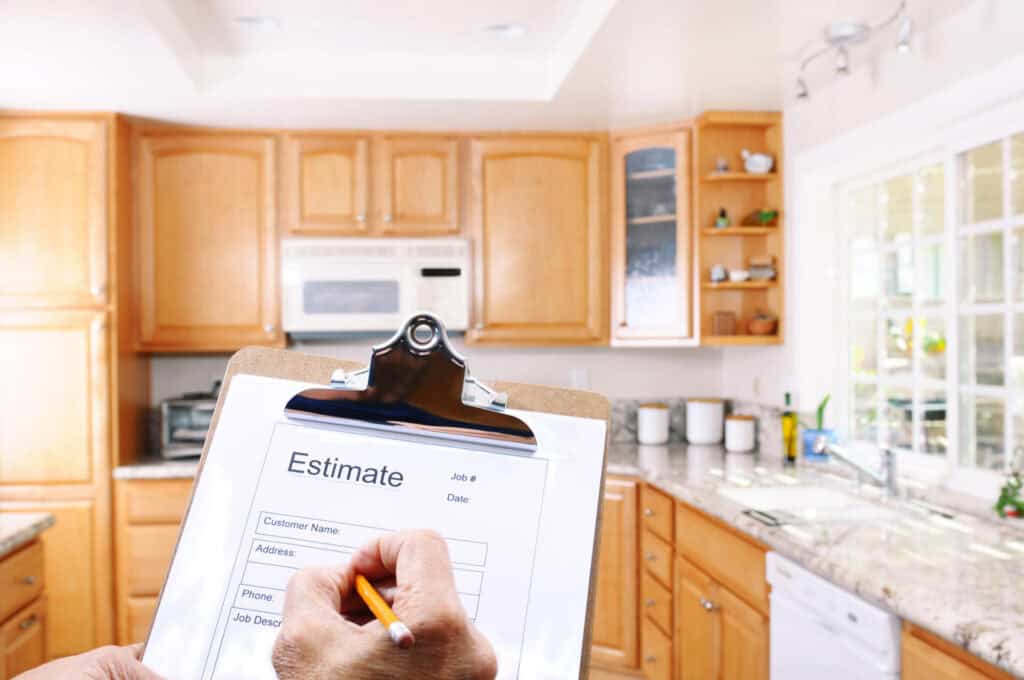
Another option could be to re-purpose your kitchen cabinetry into other rooms in your home. Maybe you need a basement kitchen, a bar, a secondary refrigerator in your garage – you essentially continue the life-cycle of these components instead of dumping them into a landfill. Go green!
2. Go with a Classic Design:
Right off the bat you might be wondering how the style of your kitchen can make a difference in saving the earth. This is where designing for inheritability comes into play.
Imagine you’re house-hunting and you walk into a bright red kitchen. Chances are you are going to tear that down and start fresh, regardless of how old it is. But if the next kitchen is an ever-popular Classic White Kitchen, (or for this blog, the “CWK”), akin to the “little black dress”, why fix what ain’t broke? With a neutral palette like that you can make it your own without tearing it out. Add new lighting, wall colors, window treatments, and stools.
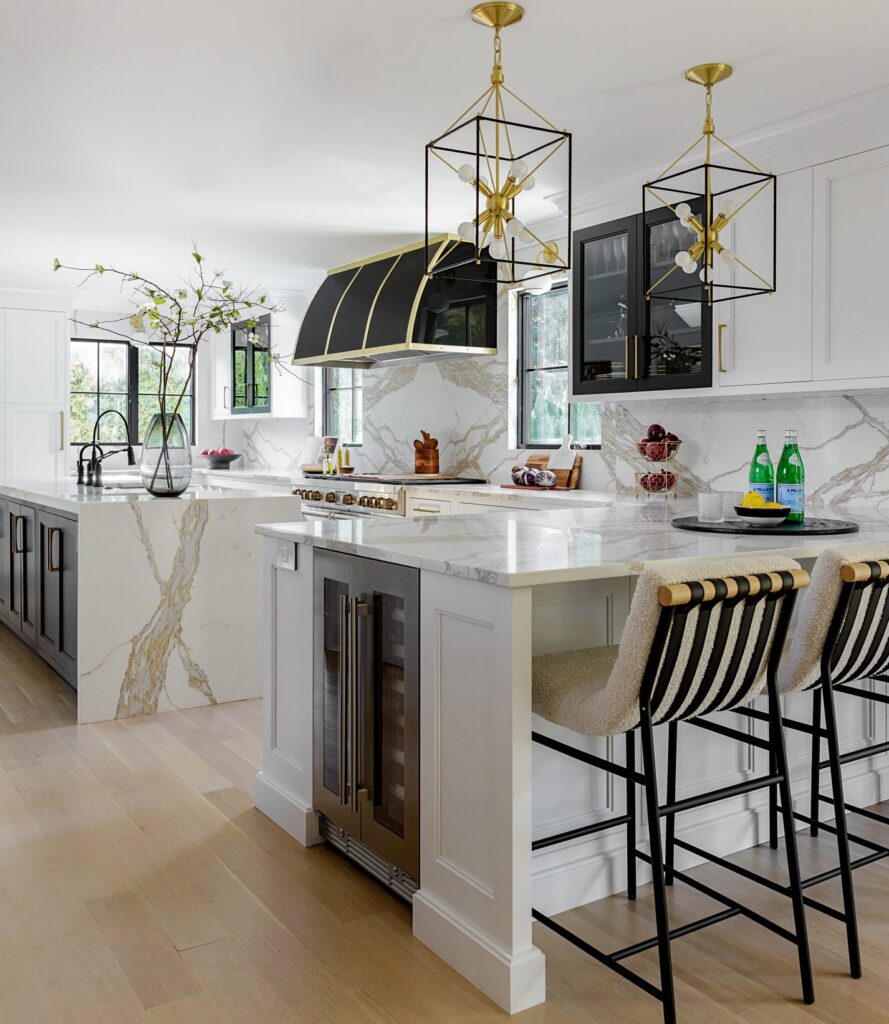
Say you decide to buy the house with the red kitchen anyway. Now Sustainability Angels has picked it up, and you are starting from scratch.
A kitchen renovation is a large undertaking and making selections on style and materials can be overwhelming. There are so many trends to consider, so many “must-haves”, and ultimately you want to love being in it – after all, it will be the heart of your home.
Maybe you plan to be in that house for 20+ years; or maybe you plan to re-sell in five. Regardless, if saving the earth is at the top of your list, this is your chance to go with the “CWK”. If your passion for the planet outweighs your urge to go with the what’s trending, like today’s blue or black cabinets, then just remember: select the neutral palette and dress it up however you want to make it your own. Mother Earth will thank you in the long run.
3. Invest in Quality:
Another thing to keep in mind when making your kitchen selections is quality, quality, quality.
Yes, custom cabinetry and top-of-the-line appliances can be very large investments. But ultimately if you invest in the best you’ll be set for a very long time to come. Your brand new kitchen will be far more likely to stand the test of time (and less likely to end up in a landfill).
4. Weigh the Pros & Cons of Cabinet Materials and Finishes:
When it comes to selecting your cabinetry, it’s important to note that there is no such thing as “formaldehyde-free” wood. However, some woods contain, and emit, lower levels of formaldehyde and are thus less harmful to the environment and the end-user. It starts at the core, with what the cabinet box is made of – plywood, particleboard, etc. There are pros and cons of each.

Then you have to consider the glue used to put the cabinet together, the wood you select for the exterior, and the finish you choose.
There are so many options for all components of the cabinets that it’s impossible to explain in one blog. Your best option would be to ask your kitchen designer to guide you on which might be most suitable to meet the level of sustainability you are trying to achieve. Nothing will be 100% perfectly green, but you have the opportunity to decide what you can comfortably live with at the same time as helping to save the environment.
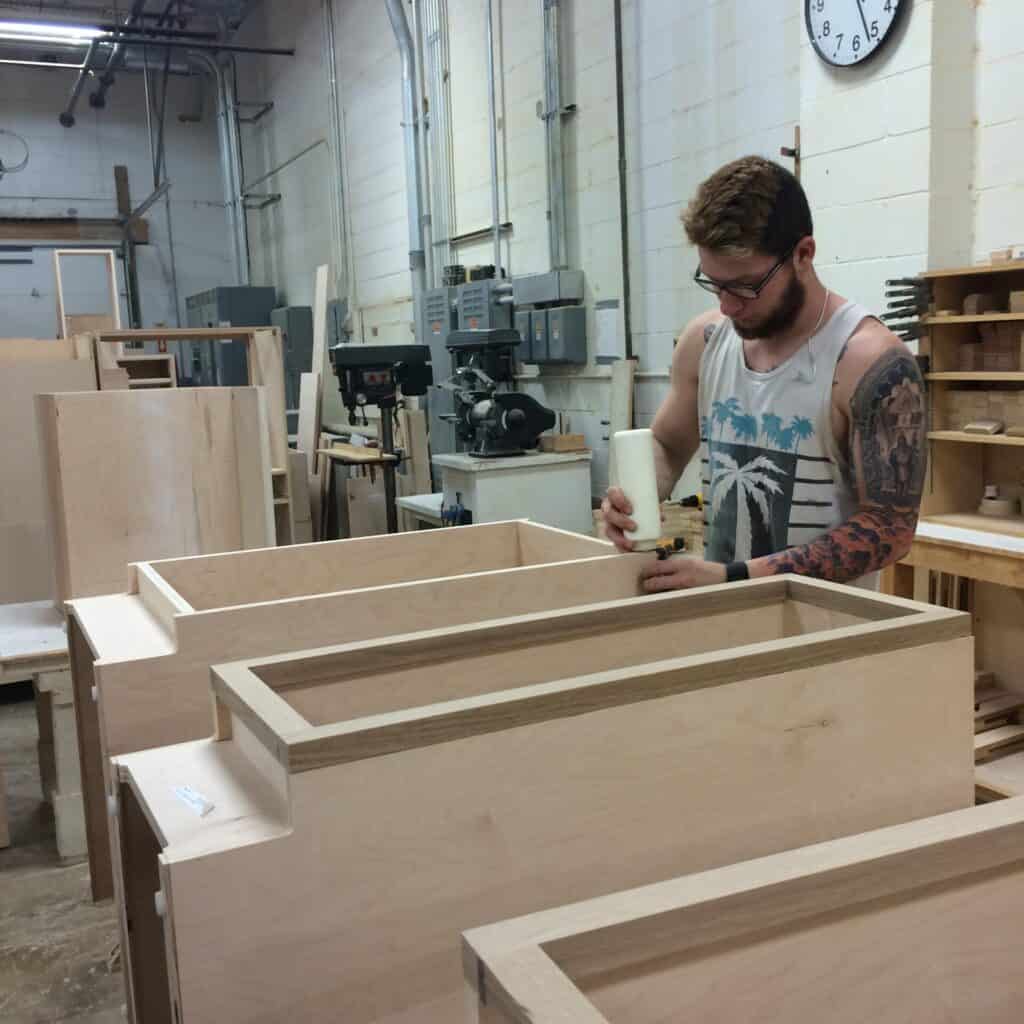
5. Research the Most Eco-Friendly Stone for Countertops:
Three of the most ecologically safe materials for countertops are granite, quartzite, and marble. To start, they are all natural – from the earth – and there is an abundant resource from the earth’s crust. They are harvested from their in-situ position without altering the natural fabric of the material. They have long life cycles and are 100% recyclable so they will not end up in a landfill.
To meet the ever-evolving market trends and client expectations new quarries are constantly being opened.
As an alternate to natural materials, there are man-made engineered stone options, like quartz. These stones give you more control over the color and veining and they are 100% recyclable. It’s really a matter of taste.

6. Purchase the Most Energy Efficient Appliances:
Do you like to cook? Are you one of those people who wants to fit ALL the appliances in your kitchen? Well, continuing on the eco-friendly kitchen design topic, when it comes to selecting your appliances the most sustainable approaches are to:
- Purchase something timeless, a brand that is built to last 20+ years.
- Pay attention to the highest efficiency ratings (Energy Star Certified).
- Work with a company that makes their own parts in the US vs. importing from another country.
The are also characteristics of certain appliances that make them more eco-friendly than others in their categories.
When it comes to dishwashers, select something that has sensor-optimized cycles, options for quick wash (i.e. less water), and options for rinse cycles with no heat dry.
When choosing a refrigerator try for a model that has a separate cooling system for the refrigerator and freezer to prevent fresh food spoilage and minimize freezer-burn. Maybe instead of the full height, 36″ all refrigerator, go with a smaller, undercounter model and drawers to cut down on energy.

And of course stop opening that fridge a hundred times a day! And for cooking? When it comes to gas vs. electric vs. and induction cooktops, its induction all the way.
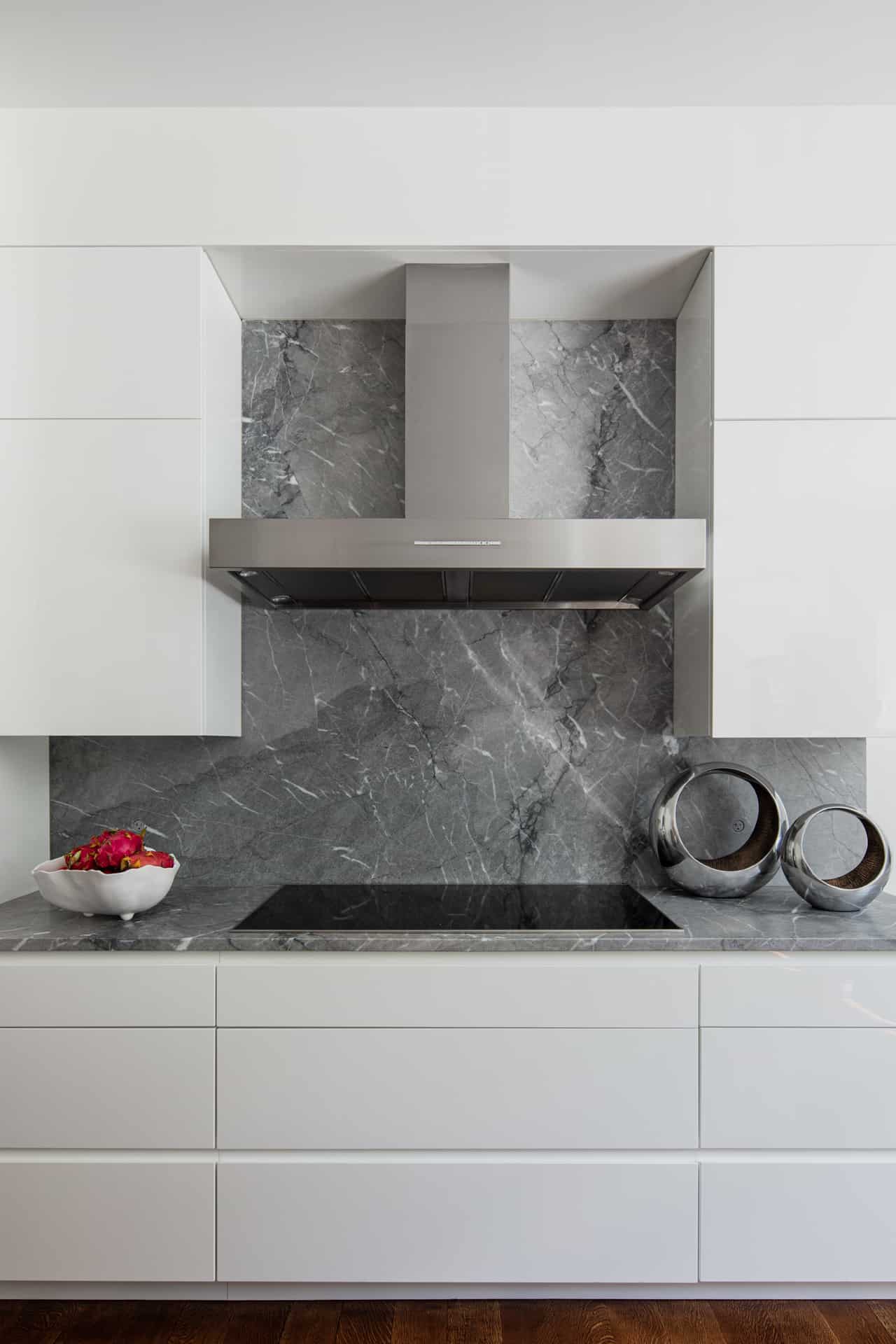
Not only does it heat up fast, but it’s safe, doesn’t warm the air around it, and is all-in-all the most energy efficient. Sorry electric – you are generally “the worst” when it comes to energy efficiency – slower heating and cooling and longer cooking times uses up far more energy than induction. People still do love gas cooktops though. And while they do heat up fast and cook efficiently, they sometimes compromise indoor air quality.
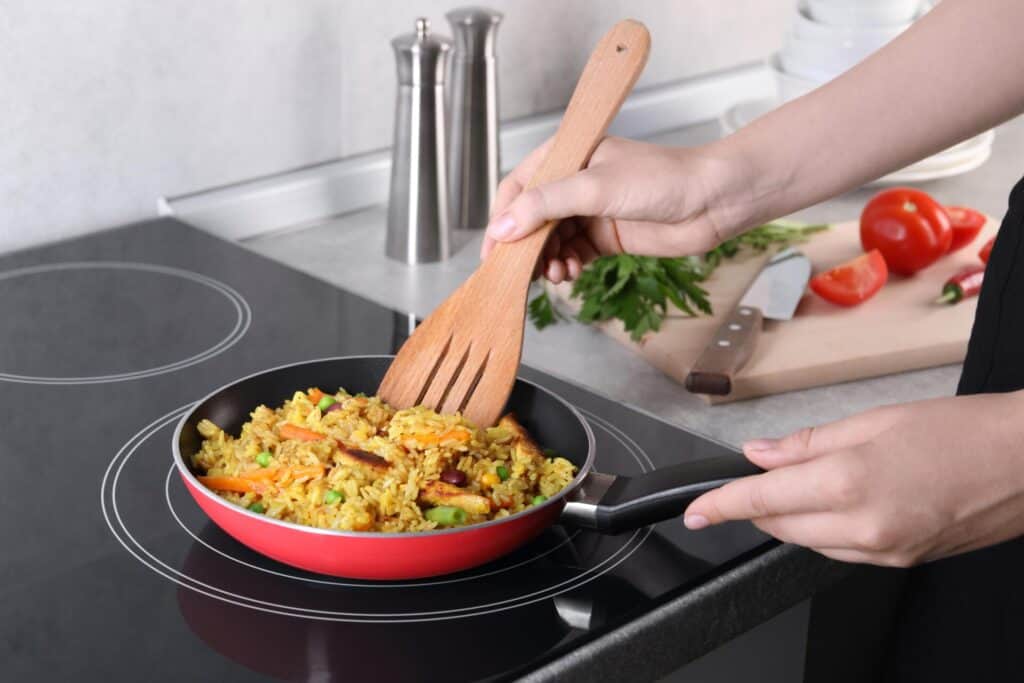
7. consider the Production, Packaging & Shipping:
Something that most people probably don’t consider (it’s out of site, out of mind) is the factory from which your cabinetry and other products are being made; how they are packaged; and how they get from point A to point B. This could be a blog in and of itself but to give you some brief pointers, here are some questions to ask your designer when you want a more sustainable kitchen (or whoever you are purchasing from):
- Is the factory environmentally conscious with a zero-waste objective?
- Do they generate power through solar panels.
- Do they divert waste from landfills by finding multiple alternative end-uses.
- Do they collect saw dust for use in animal bedding.
- Do they have CAD systems which take a cut sheet and minimize waste by maximizing yield.
- Do they use “mix at the nozzle”, where paint and hardener is mixed on the go rather than systems that mix in a pot and have considerable waste.
- Do they understand the importance of spray booths to further eliminate VOCs escaping into the environment.
- Do they use machines with automatic shutdown.
- Do they recycle the water they use during their processes – ex: cutting stone or testing faucets.
- Do they ship their products in corrugated cardboard boxes.
- Or for cabinets, do they blanket-wrap them with reusable furniture blankets vs. plastic and foam.
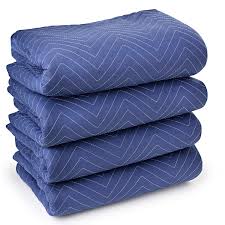
When is comes to shipping, regardless of what facility the products are coming from make, sure they:
- Utilize appropriately sized trucks (not oversized).
- Fill them with as much product as possible, maximizing each gallon of fuel.
- Use GPS to track the fastest, most efficient routes. (Some factories are even moving towards electrical vehicles.)
- Purchase from a local dealer for a shorter trip from showroom to end-user.

So, as you can see, there is so much consideration that goes into a sustainable kitchen renovation – this blog only covers the surface. There is already unlimited options to choose from, so many influences with social media, so many trends. But when you add eco-friendly into the mix your head may start to spin. There are also eco-friendly options for faucets, hardware and more. Just about everything you select for your kitchen has a “green” option (or as close to as possible).

Remember, there is no plan(et) B. We have one earth, and according to author Robert Swan “the greatest threat to our planet is the belief that someone else will save it.” So do your part when you can.

For more information, please email kristin@bilotta.com or, if you’re in the industry, send a request to ceu@bilotta.com to sign up for our next virtual CEU course: “Sustainability in the Kitchen.”
For more tips on living a healthy, sustainable life read our blog Waste Not, Want Not.

